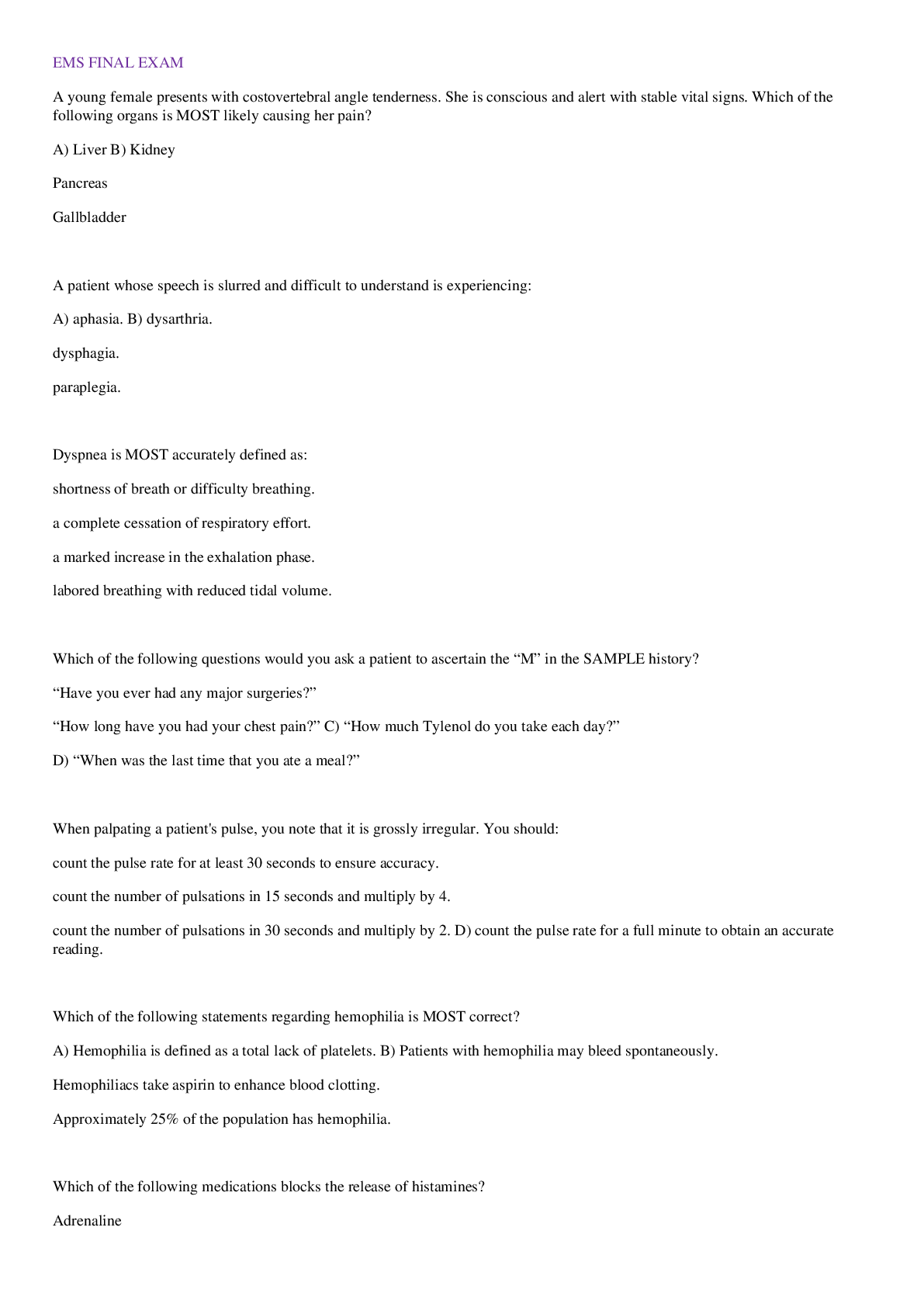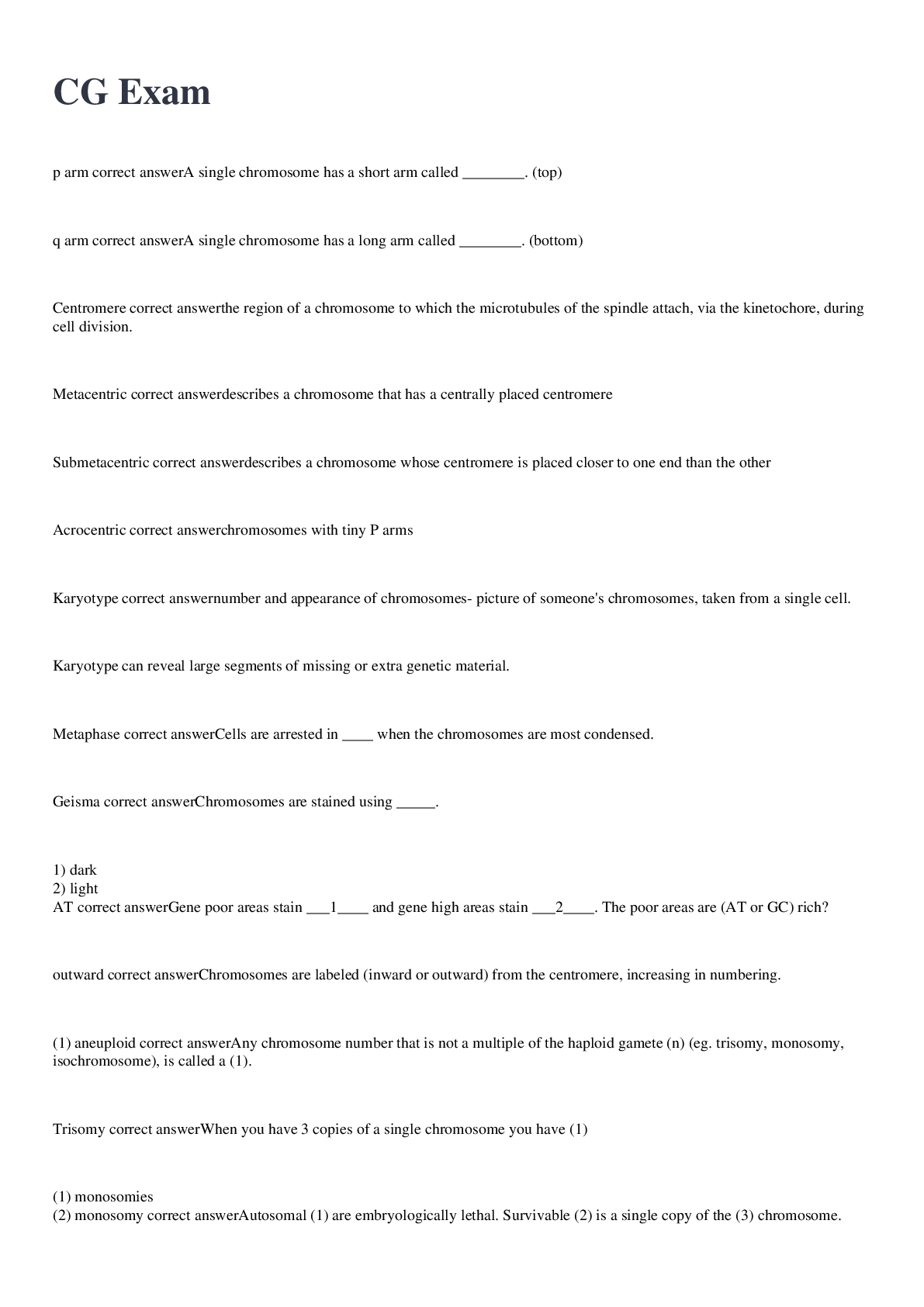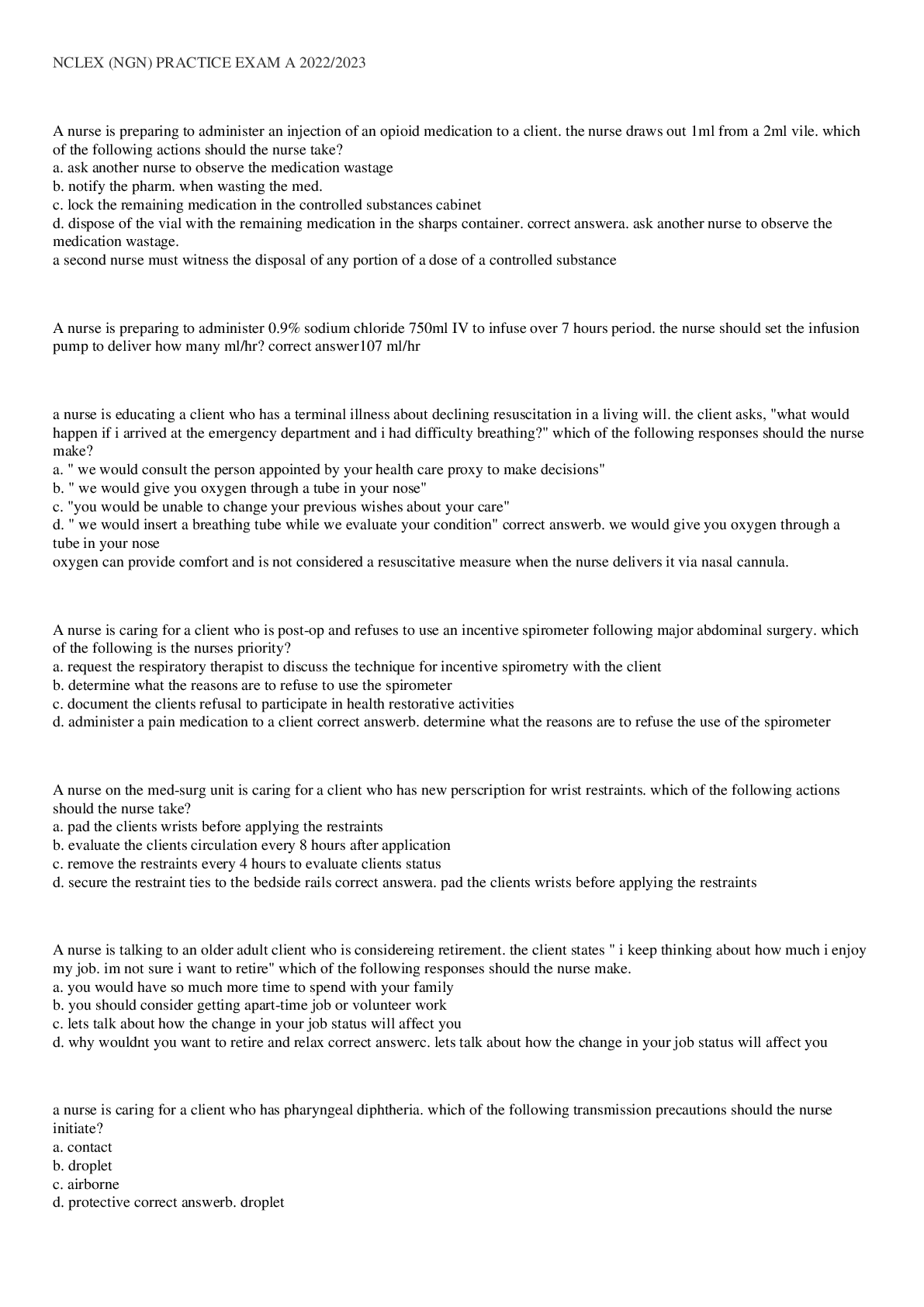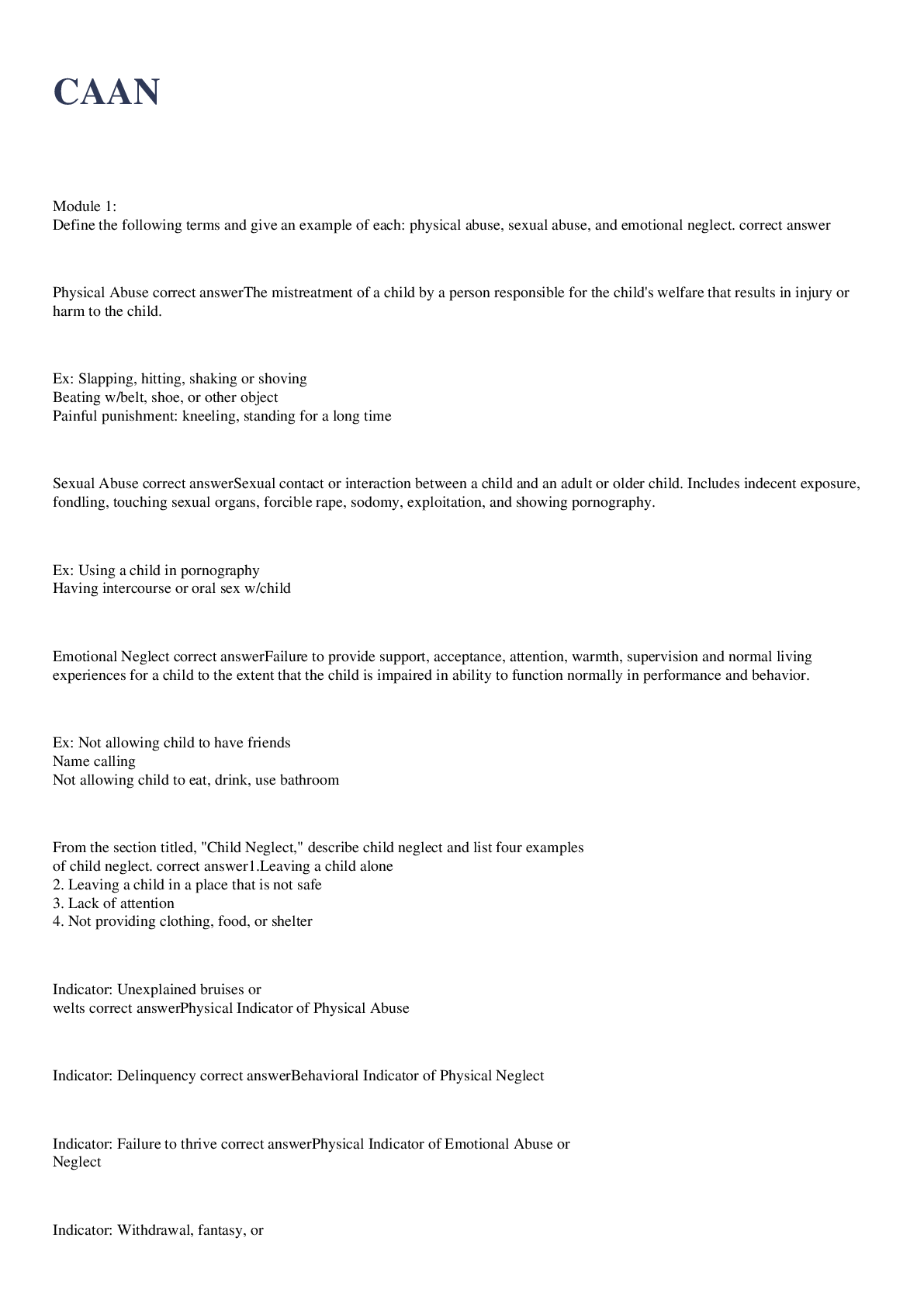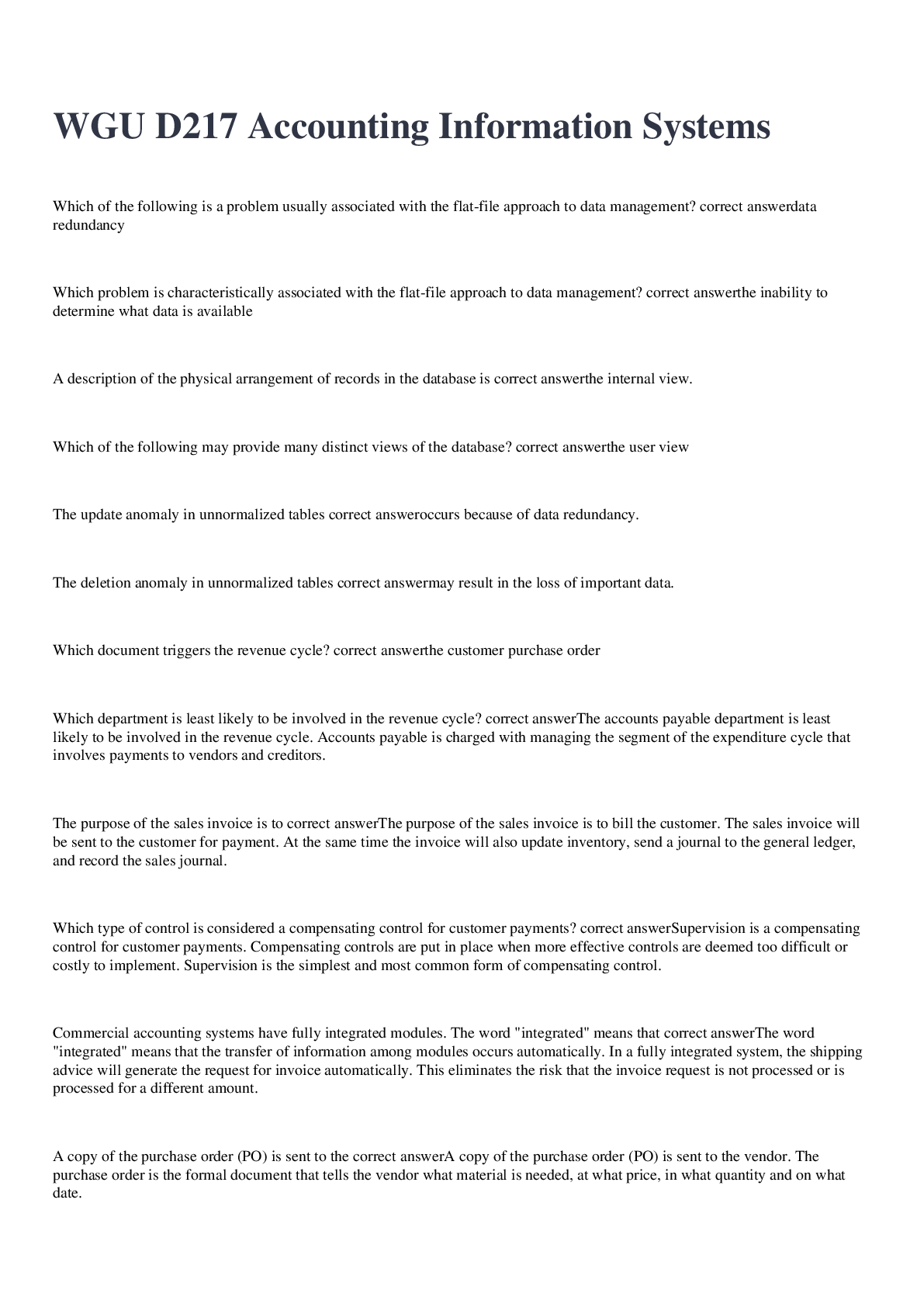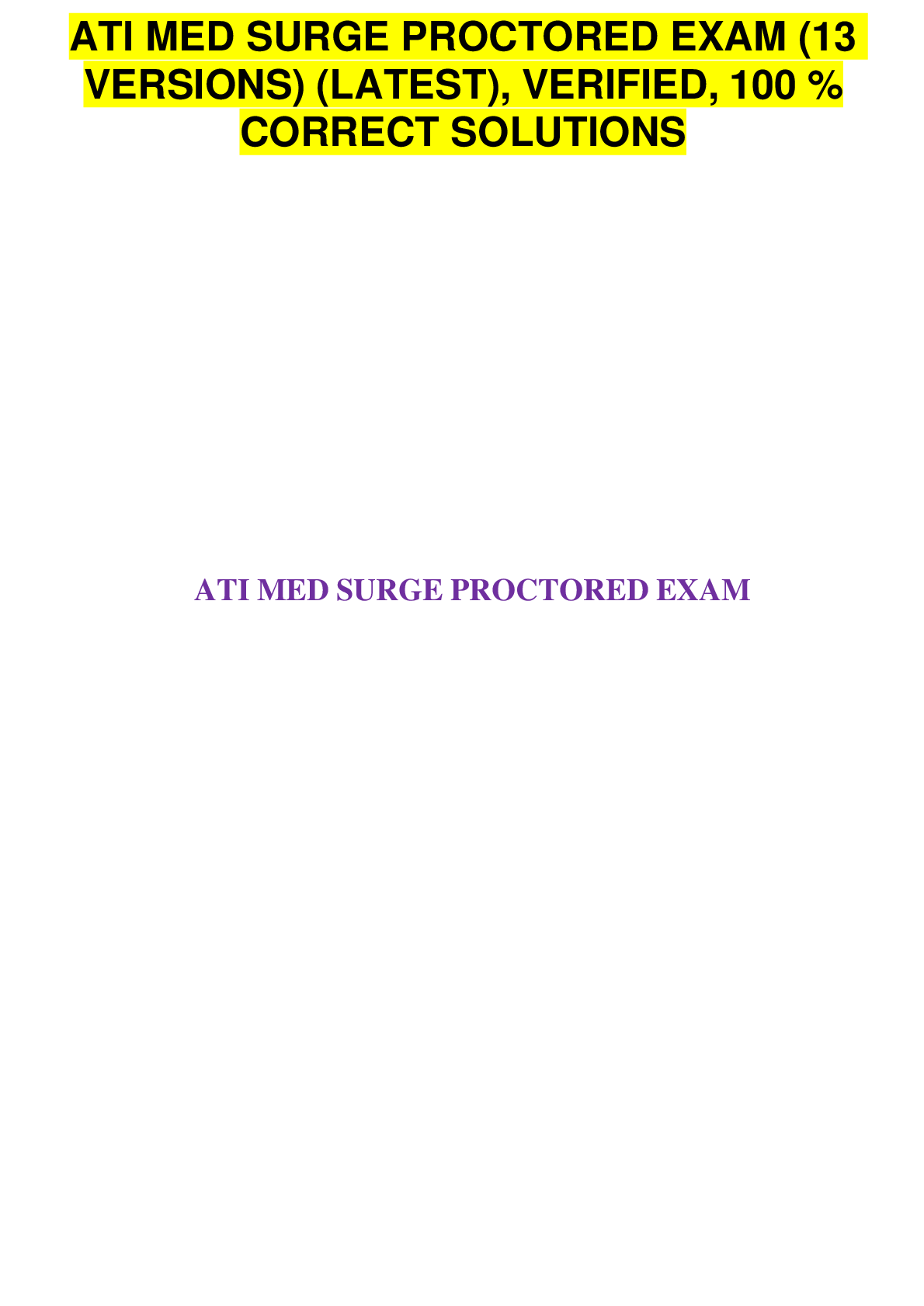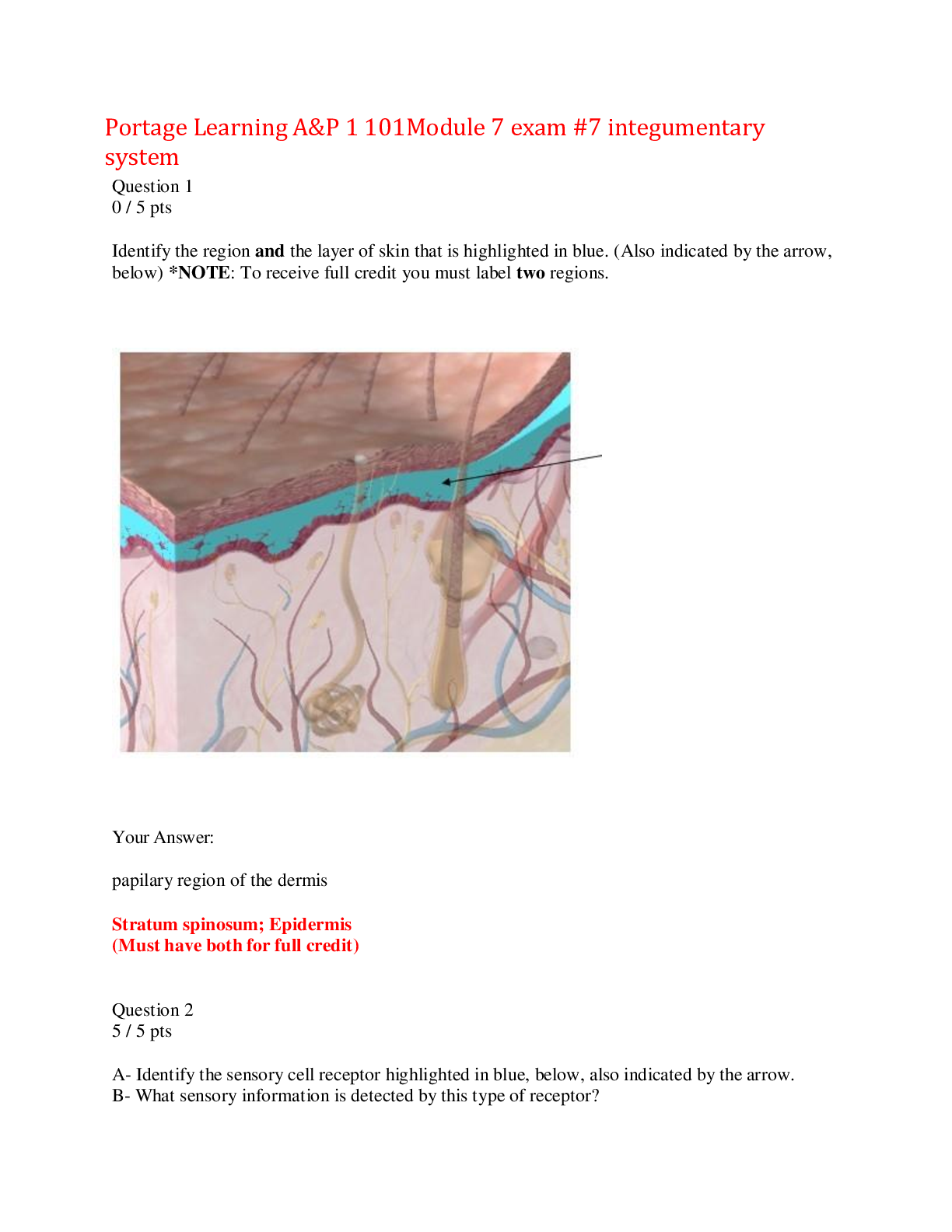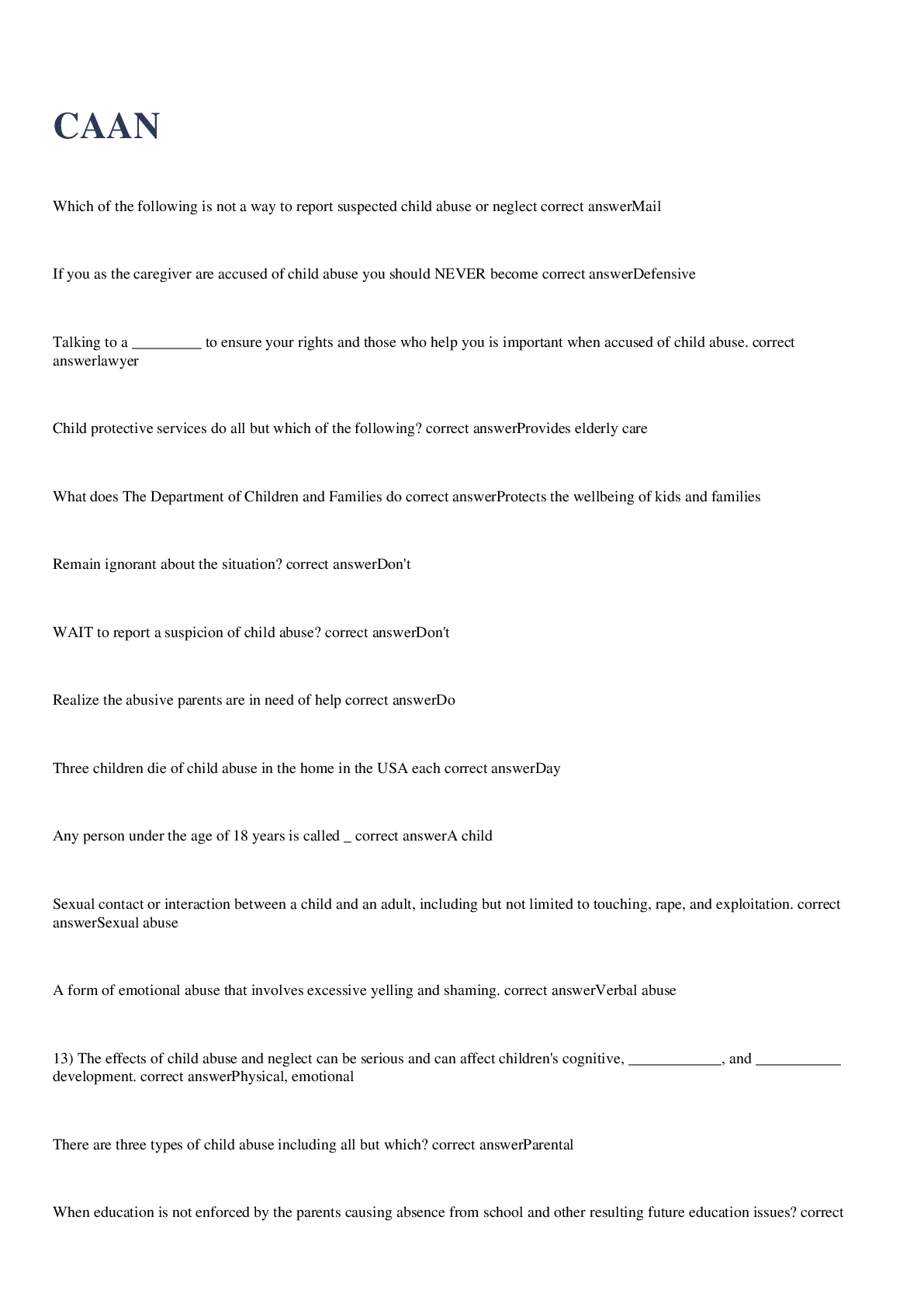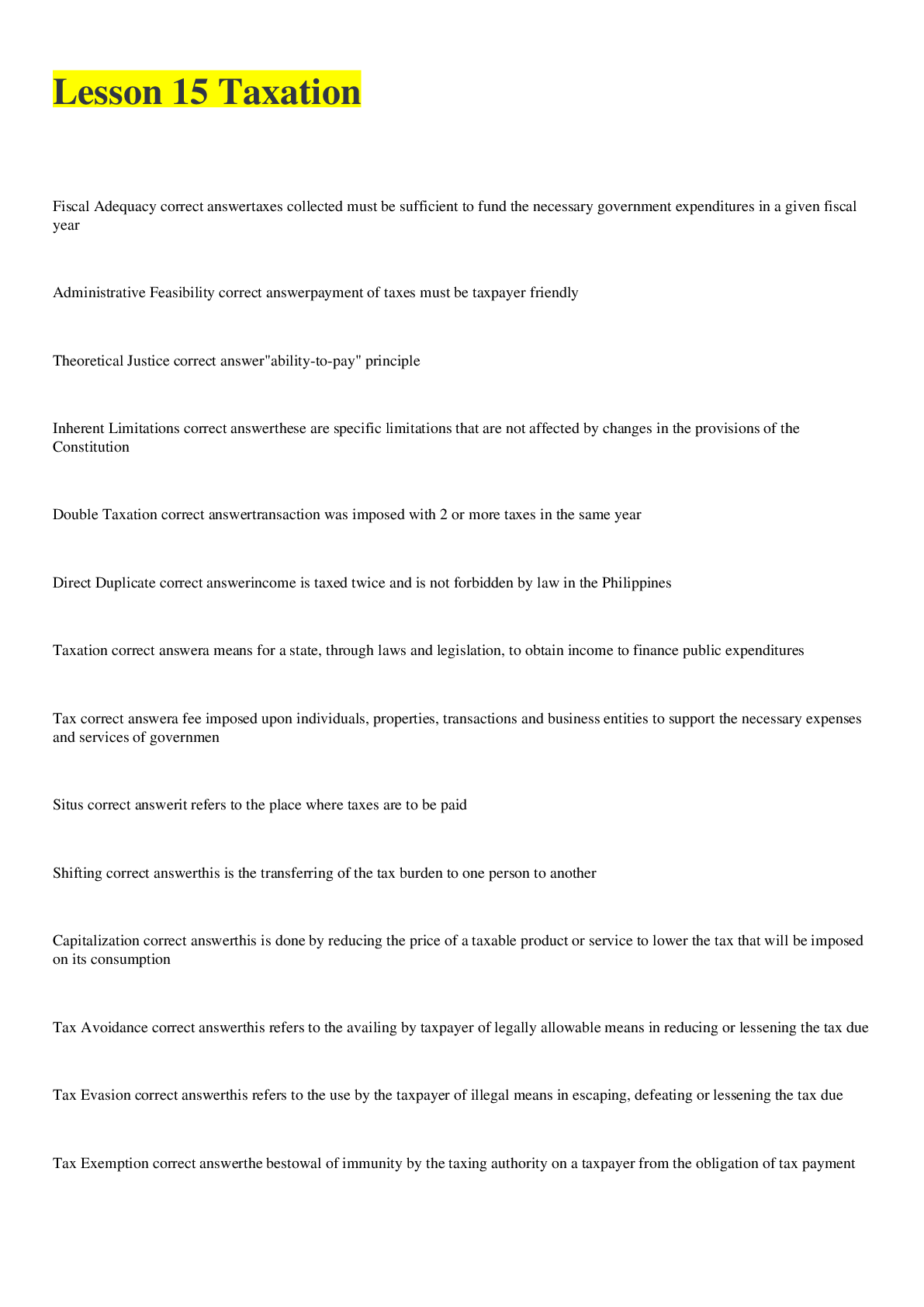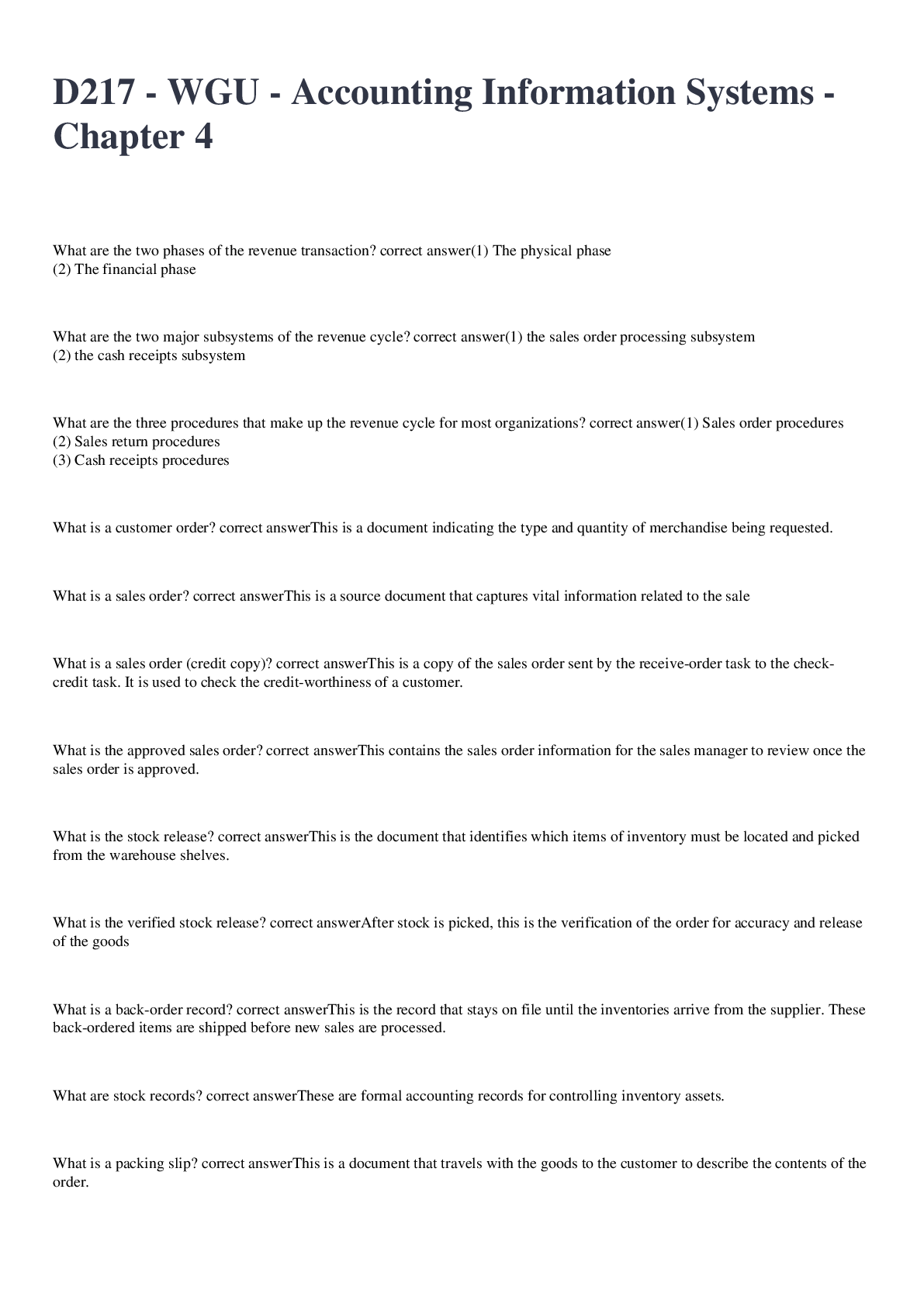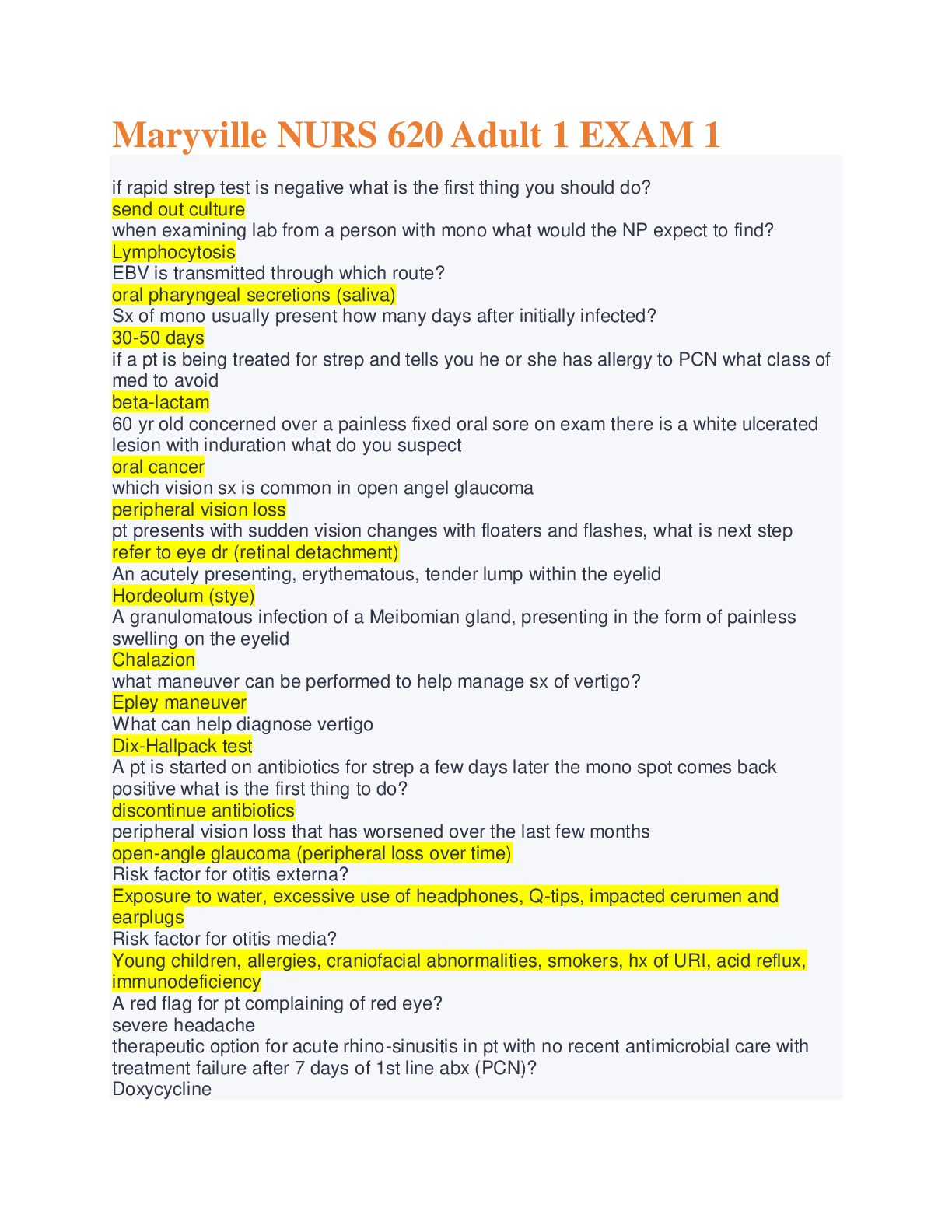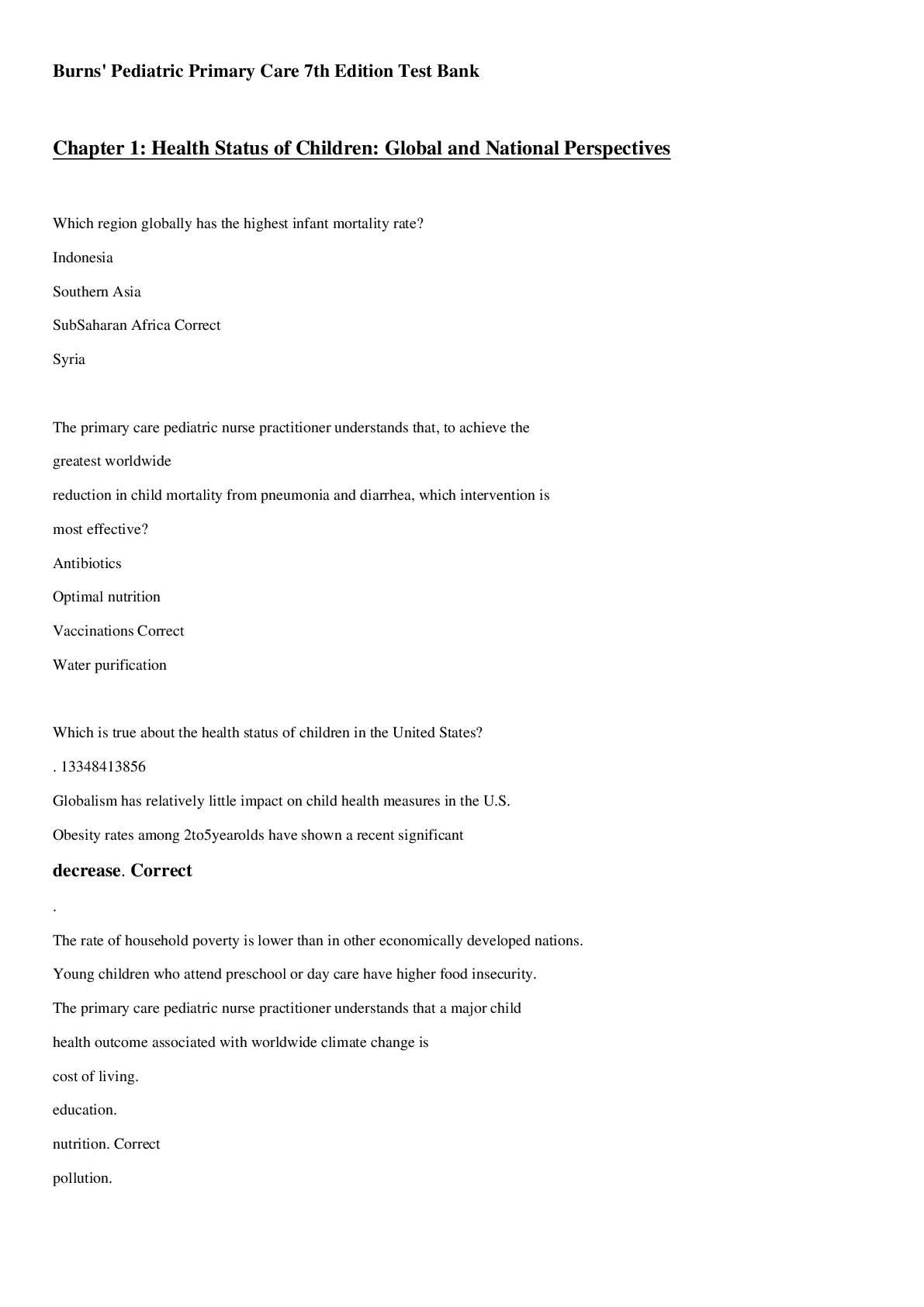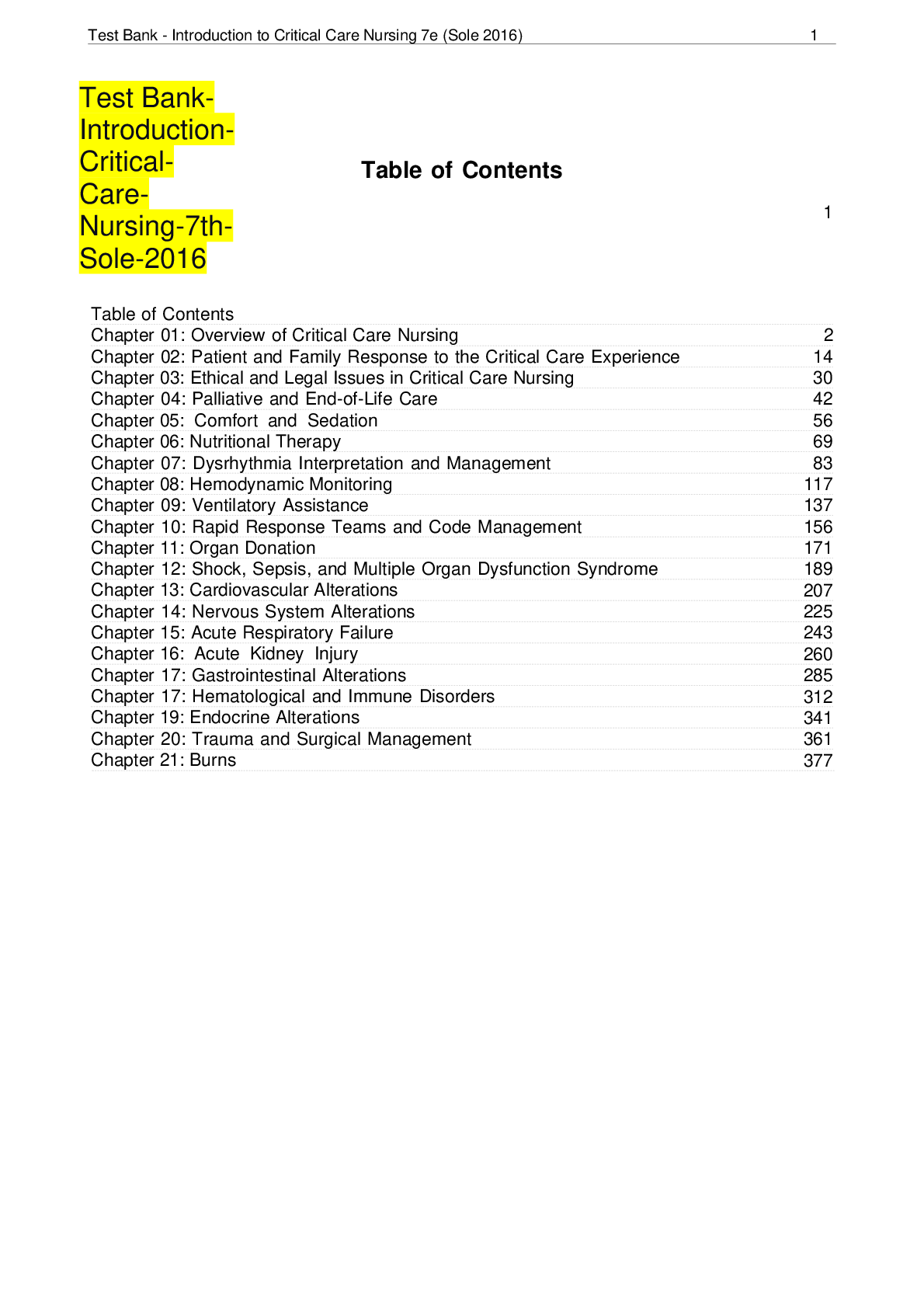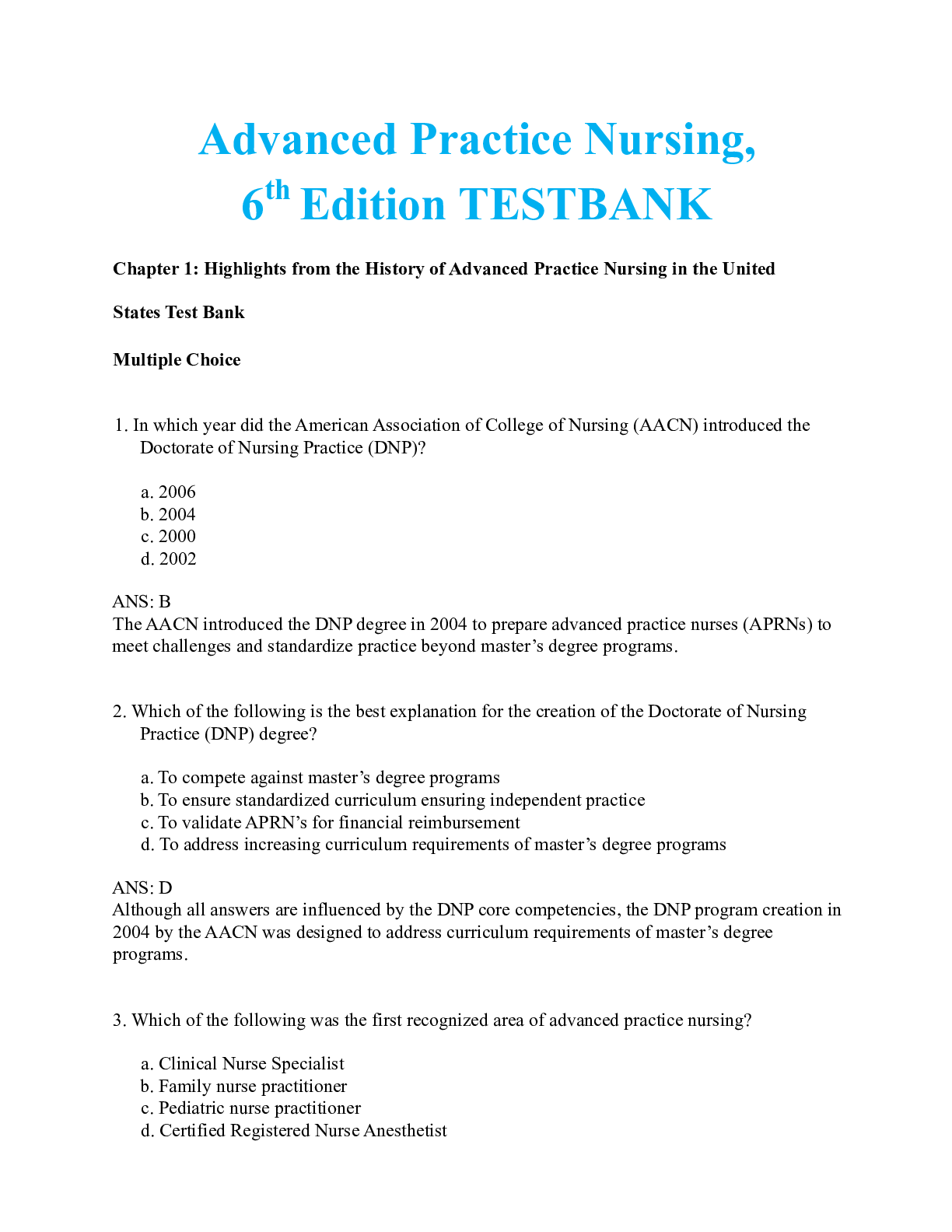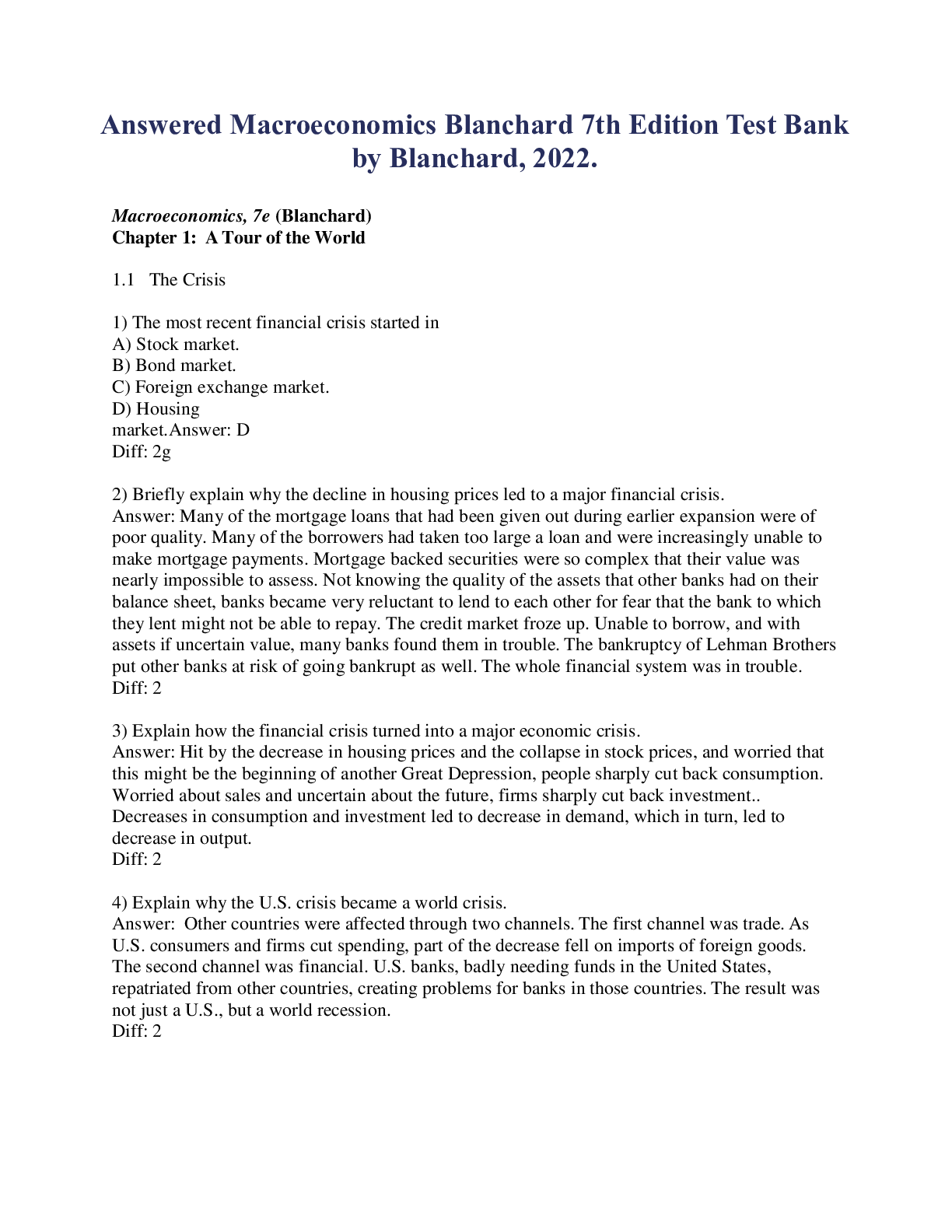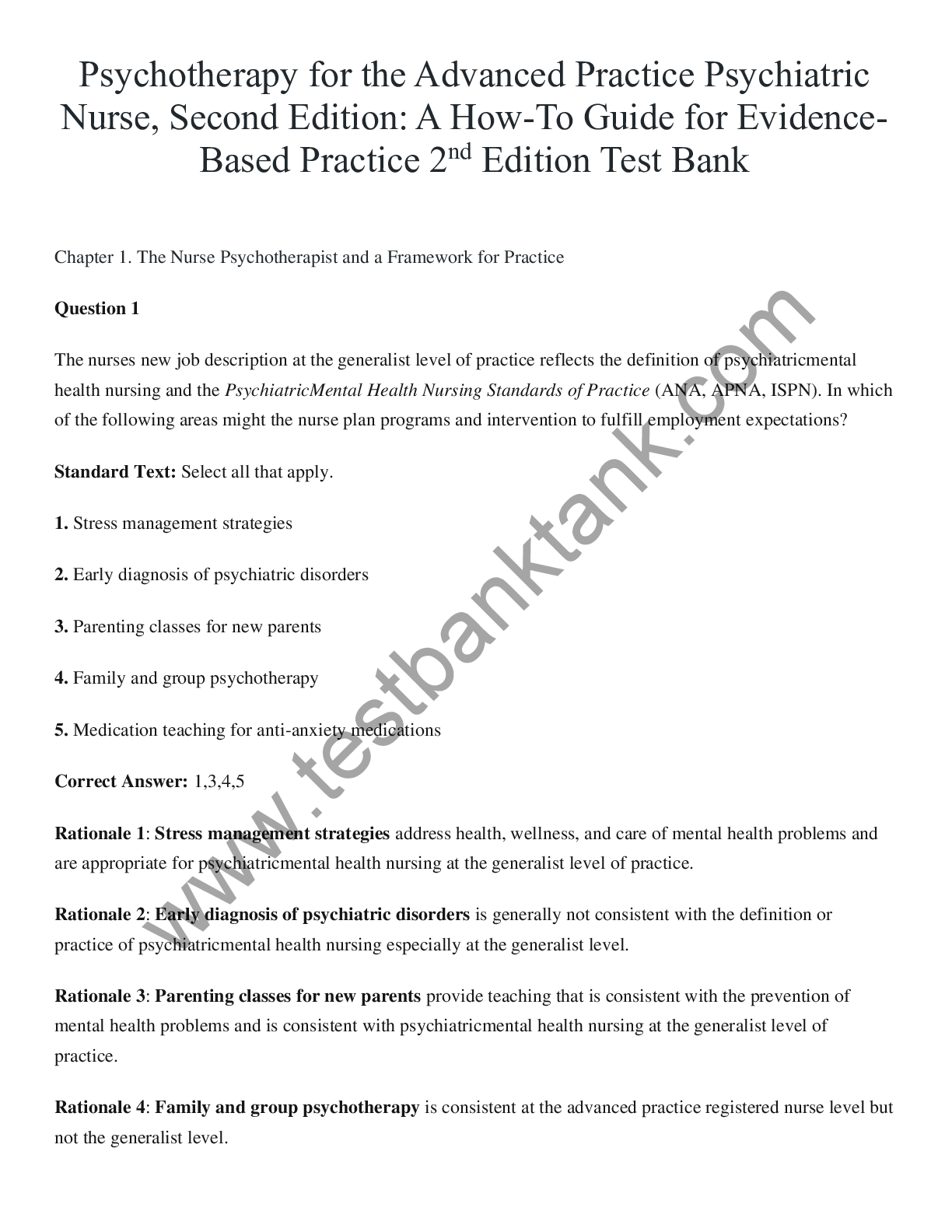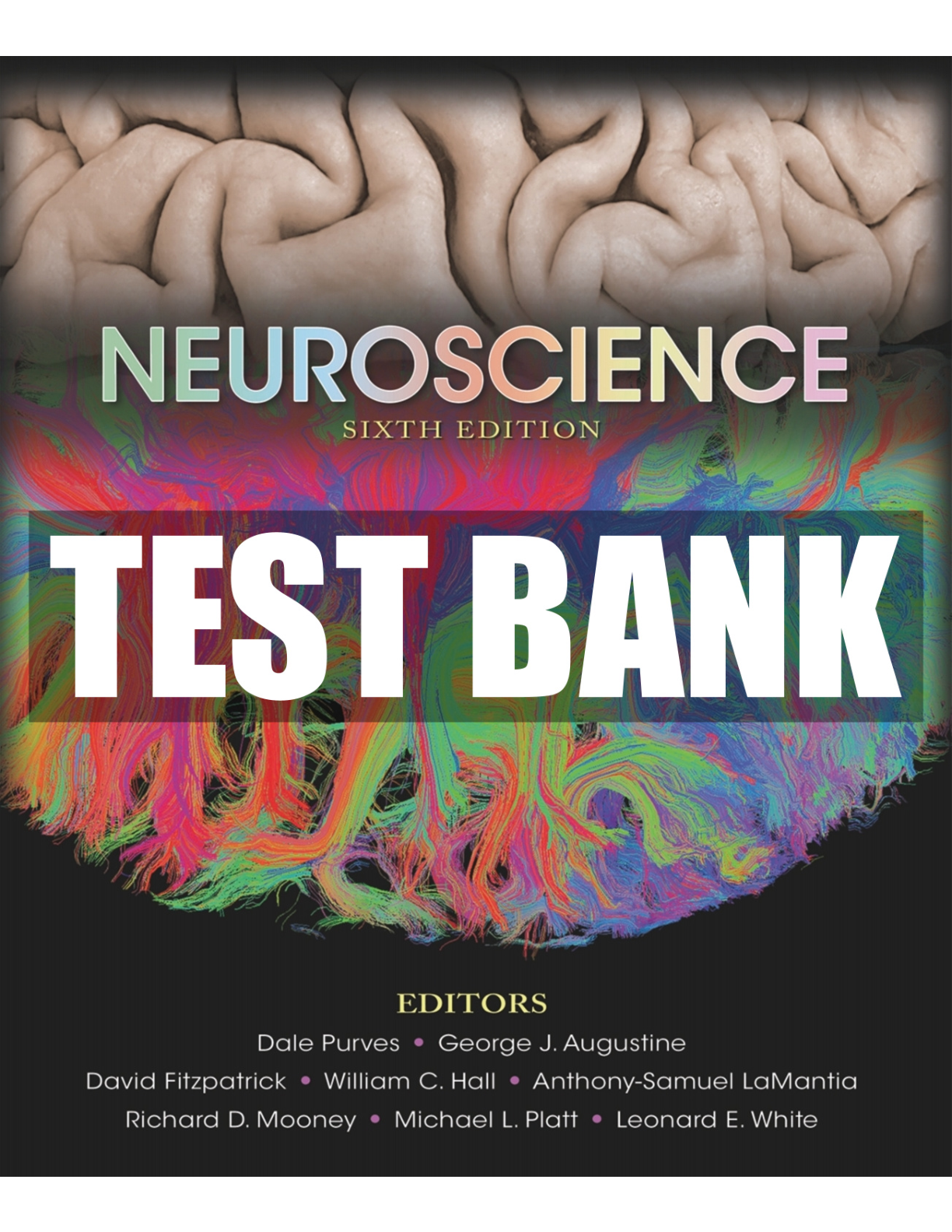Medical Studies > EXAM > NEUROSCIENCE EXPLORING THE BRAIN 4TH EDITION TEST BANK BY MARK F. BEAR, BARRY W. CONNORS AND MICHAEL (All)
NEUROSCIENCE EXPLORING THE BRAIN 4TH EDITION TEST BANK BY MARK F. BEAR, BARRY W. CONNORS AND MICHAEL A.PARADISO
Document Content and Description Below
1. Why are a broad perspective and an interdisciplinary approach required for understanding the brain? Choose the correct option. A) Understanding the brain is a focused area in natural science wit... h the brain serving as the common point of focus. B) Understanding the brain requires knowledge about many things, from the structure of the water molecule to the electrical and chemical properties of the brain. C) Understanding the brain requires the study of the different species of the brain. D) Understanding the brain requires the analysis of one approach at a time to yield a new synthesis. 2. Galen's study of sheep brains was the basis for a theory of brain function that prevailed for almost 1500 years. Which of the following represents this view? Choose the correct option. A) The heart as the center of intellect and the brain as the cooling system B) Localization of brain function in the cerebrum and cerebellum C) Mind–brain duality D) Parceling the cerebrum into lobes 3. What is “mind–brain problem”? Choose the correct option. A) Individually, human mental capacities exist in the mind that is outside the brain. B) The mind is the same as the brain. C) Both animals and people possess intellect and a God-given soul. D) The pineal gland is a spiritual entity. 4. What notion was displaced by the concept of nerves being described as wires? Choose the correct option. A) Nerves are channels that communicate with the brain by the movement of fluids. B) Muscles can be twitched when nerves are stimulated electrically and the brain itself may generate electricity. C) Signals to the muscles causing movement use the same wires as those that register sensations from the skin. D) Nerves conduct electrical signals to and from the brain. 5. The combined work of Bell and Magendie revealed a fundamental fact about the spinal nerves. Choose the correct option. A) Spinal nerves are myelinated. B) Spinal nerves are bundles of sensory and motor nerves, and in each sensory and motor nerve fiber, transmission is strictly one-way. C) Spinal nerves are not hollow tubes carrying fluid. D) Both humans and animals have spinal nerves. 6. For what purpose did Franz Joseph Gall study the dimensions of the human head? Choose the correct option. A) To understand the propensity for certain personality traits B) To demonstrate equal participation of all regions of the brain in all cerebral functions C) To show that nerves conduct electrical signals to and from the brain D) To show that unique human mental capabilities exist outside the brain 7. On what basis did Broca defend functional localization of the brain? Choose the correct option. A) By establishing a relationship between the production of speech and the right frontal lobe B) By establishing a relationship between the production of speech and the occipital lobe C) By establishing a relationship between the production of speech and the left frontal lobe D) By establishing a relationship between the production of speech and the cerebellum 8. To whom can we attribute the theory that behavior is among the heritable traits that can develop? Choose the correct option. A) Marie-Jean-Pierre Flourens B) Charles Darwin C) Gustav Fritsch and Edward Hitzig D) Franz Joseph Gall 9. Which of the following is a correct explanation of a disorder that affects the nervous system? Choose the correct option. A) Cerebral palsy is a motor disorder caused by damage to the cerebrum before, during, or soon after birth. B) Epilepsy is a progressive disease that affects nerve conduction, characterized by episodes of weakness, lack of coordination, and speech disturbance. C) Stroke involves a loss of feeling and movement caused by traumatic damage to the spinal cord. D) Alzheimer's disease is a severe psychotic illness characterized by delusions, hallucinations, and bizarre behavior. 10. A neuroscientist is investigating how different neural circuits in the brain analyze sensory information, form perceptions of the external world, make decisions, and execute movements. At what level of analysis is this research conducted? Choose the correct option. A) Molecular neuroscience level B) Cellular neuroscience level C) Systems neuroscience level D) Cognitive neuroscience level 11. What is the rationale behind the use of animal models to understand the human brain? Choose the correct option. A) Animal brains are identical to human brains but only smaller in size. B) Brain mechanisms that motivate any reaction are identical in animal and human brains. C) The nervous systems of different species of animals and humans share many common mechanisms. D) Animal brains are easier to obtain than human brains. 12. How do neuroscientists identify the parts of the brain that are specialized for different behavioral functions related to the niche a species normally occupies? Choose the correct option. A) By studying the similarities in response pattern to fear in different species B) By studying neurons one at a time C) By comparing the specializations of the brains of different species D) By systematically destroying each part of the brain and studying its implication 13. At which level of analysis do neuroscientists study the different types of neurons and their functions? Choose the correct option. A) Cellular neuroscience B) Cognitive neuroscience C) Molecular neuroscience D) Behavioral neuroscience 14. What is the difference between replication and verification? Choose the correct option. A) Replication tests a hypothesis, whereas verification rechecks the hypothesis. B) Replication can only be done once, whereas verification can be done many times. C) Replication is repeating the experiment in other subjects to rule out the possibility of chance. In verification, the experiment is repeated and the same observations are obtained by any scientist following the same protocol as the original observer. D) Replication and verification are not essentially different. 15. Galen suggested that the cerebrum, which was soft, should be the recipient of sensations. He was of the view that to form memories, sensations should be imprinted onto the brain. Thus, this must occur in the doughy cerebrum. Although the conclusion is right, the reason suggested by Galen is incorrect. True or false? A) True B) False 16. Scientists during the seventeenth and eighteenth centuries proposed the structure–function relationship between the white matter and gray matter in the brain. According to this relationship, gray matter contained the fibers that bring information to and from the white matter. True or false? A) True B) False 17. Rats are considered valuable models for the effects of psychoactive drugs on the nervous system. True or false? [Show More]
Last updated: 1 year ago
Preview 1 out of pages

Reviews( 0 )
Document information
Connected school, study & course
About the document
Uploaded On
Oct 13, 2022
Number of pages
Written in
Additional information
This document has been written for:
Uploaded
Oct 13, 2022
Downloads
0
Views
2

